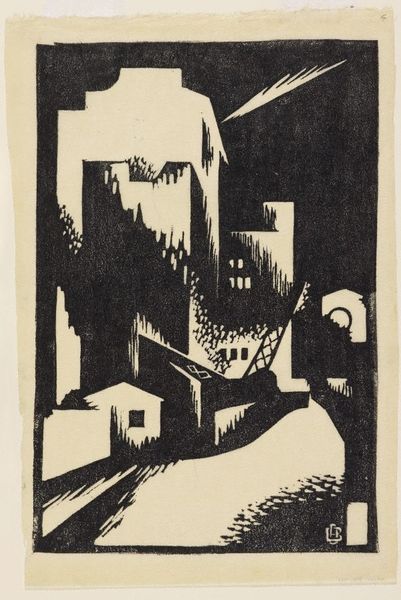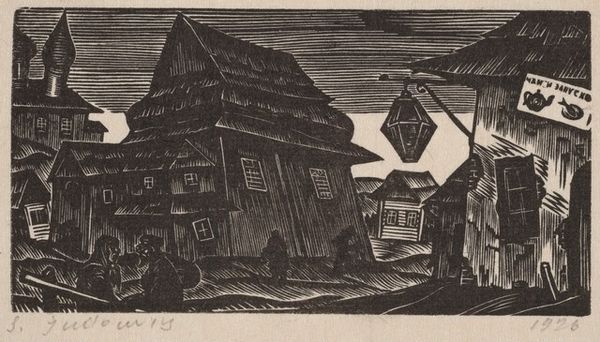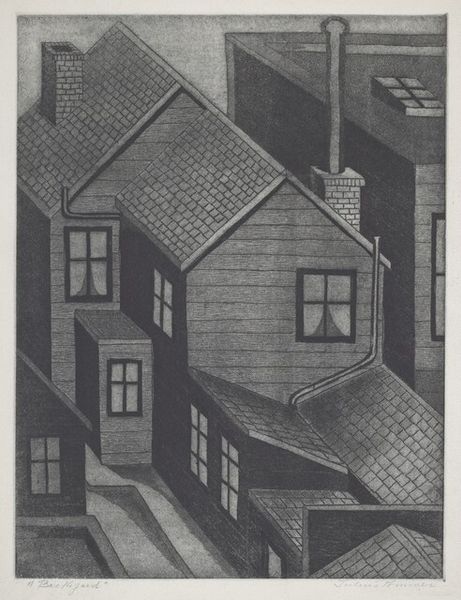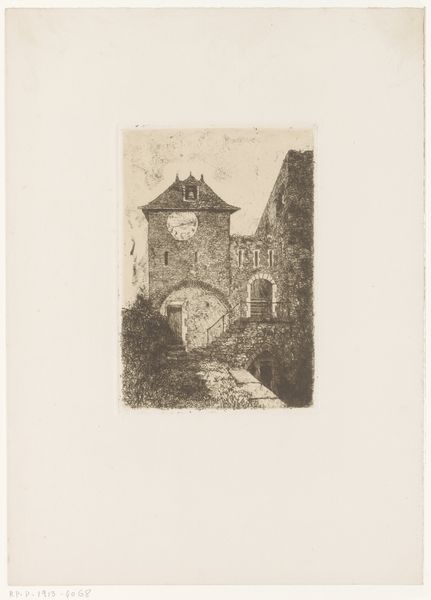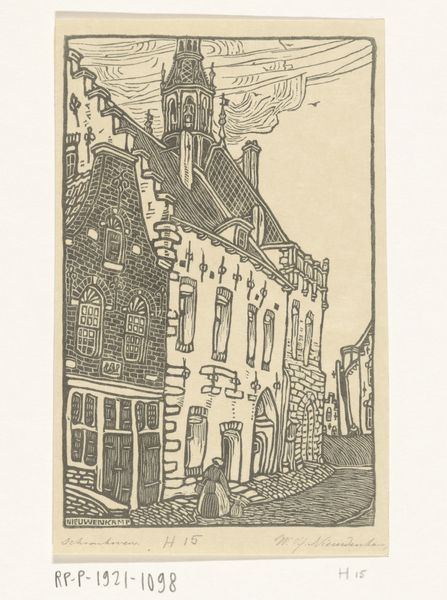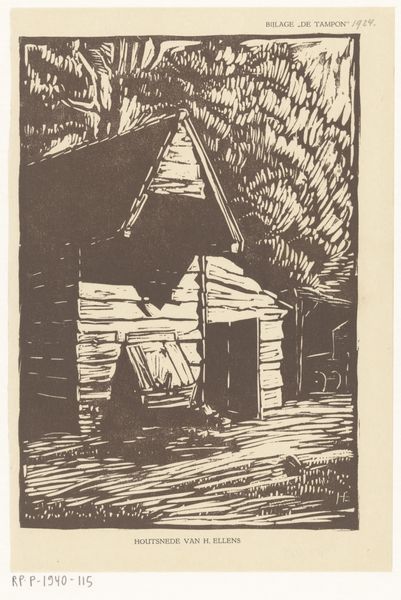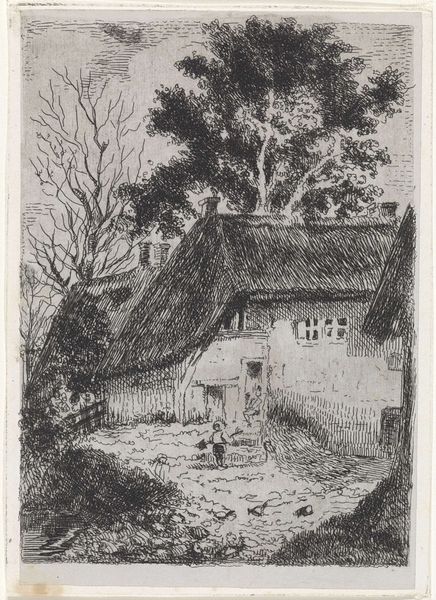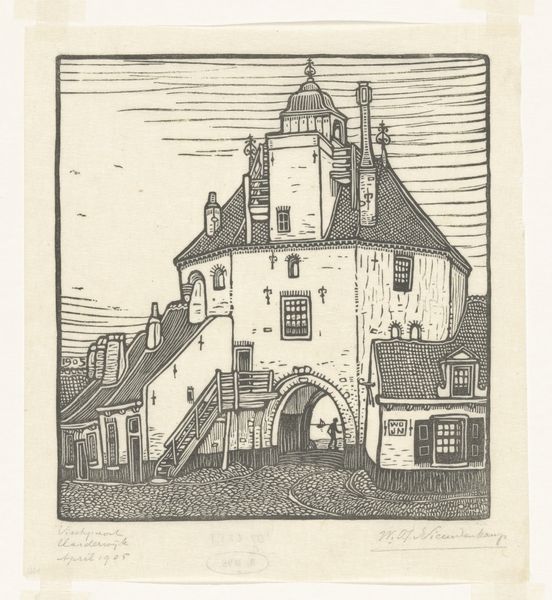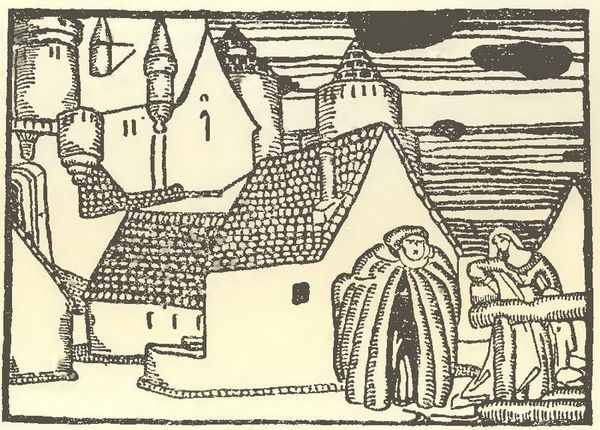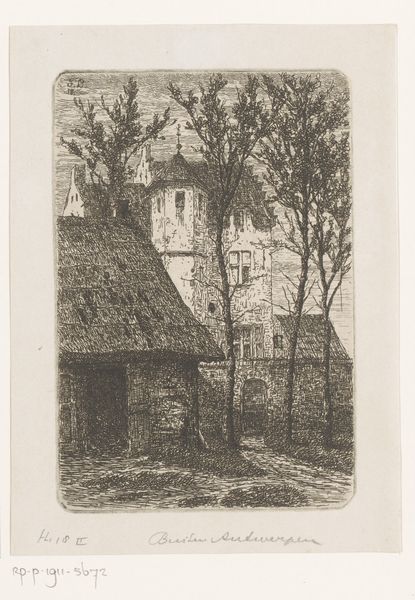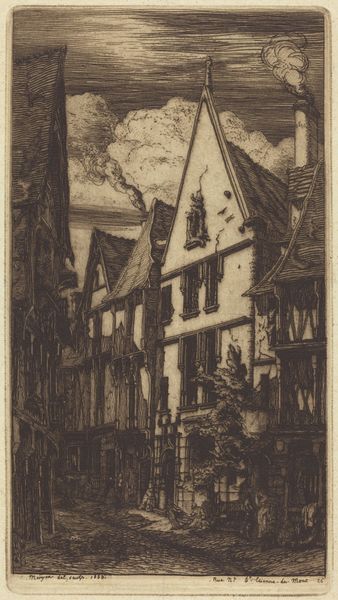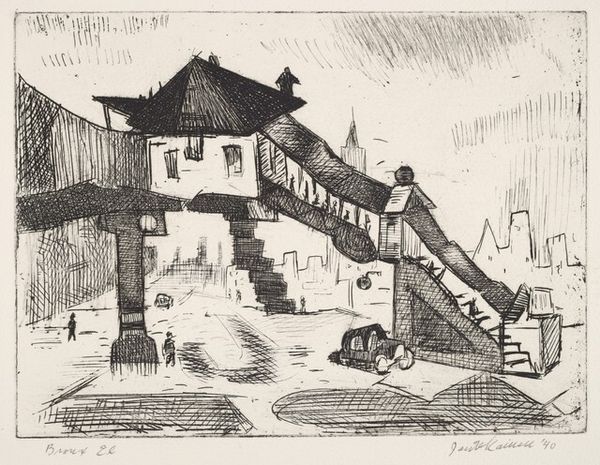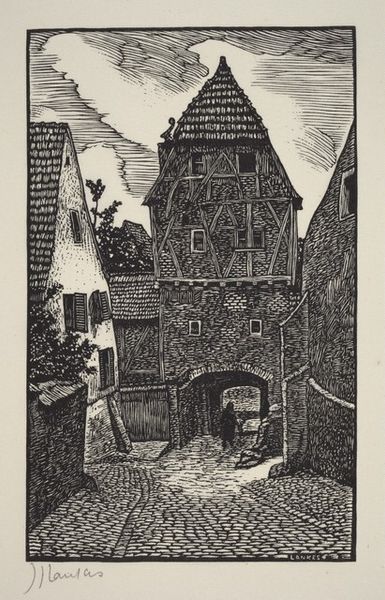
drawing, print, woodcut
#
drawing
# print
#
landscape
#
german-expressionism
#
woodcut
Dimensions: height 181 mm, width 115 mm
Copyright: Rijks Museum: Open Domain
Editor: This woodcut print, "Huizen in Neurenberg," created sometime between 1913 and 1931 by Fré Cohen, really evokes a sense of quiet mystery. The stark contrast between the black and white creates such an interesting visual tension, don’t you think? What’s your take on this piece? Curator: Oh, absolutely! The starkness draws me right in. For me, this piece whispers of history and maybe a touch of melancholy. I think about what it means to capture a place using such a direct, almost brutal method. Do you see the detail in the rooftops, almost vibrating with energy? And consider that it’s a woodcut. Can you imagine the physical labor that would be needed to carve that design? Editor: I can hardly imagine! And yes, the roofs are almost dizzying. I'm curious, does the German Expressionist label automatically lead one to a darker interpretation? Curator: It can. But don't let art historical labels always guide you to conclusions. This work shares stylistic elements with the German Expressionists but to me it is distinct because of its medium and attention to landscape over figure. Perhaps the work evokes melancholy not because of the cultural movement to which it is tied, but because Fré Cohen returned to the image years after it was initially designed. We only have Cohen's final product - a historical artifact. That separation in time has impact. So, what are you left thinking after looking at the work and knowing something more about it? Editor: I am struck by the image's complexity that belies its simple look. It makes me want to visit Nuremberg. I think this artpiece invites contemplation of our relationship to place. Curator: Yes, very well said. Each mark seems imbued with that contemplation.
Comments
No comments
Be the first to comment and join the conversation on the ultimate creative platform.
